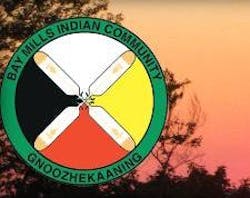EPA awards $40,422 to Bay Mills Indian Community of Michigan for water quality protection
CHICAGO, JUNE 19, 2018 -- The U.S. Environmental Protection Agency (EPA) has awarded $40,422 to the Bay Mills Indian Community of Michigan to implement water resource and nonpoint source programs to protect human health and the environment. The funding is the first installment of the tribe's Fiscal Year 2018 grant award, which will total $124,400.
"Environmental protection is a partnership between EPA, states and tribes," said Regional Administrator Cathy Stepp. "This grant will help the Bay Mills Indian Community prevent water pollution and educate its members on important clean water resources."
"Clean water is essential to the Bay Mills Indian Community," said Brian Wesolek, Aquatic Biologist for Bay Mills Indian Community. "This grant funding allows the tribe to continue efforts that monitor its surface waters and protect its aquatic resources."
EPA funding will support water quality monitoring, beach monitoring, restoration activities, and outreach and education. The tribe will collect water chemistry data at twelve sites within the Waishkey River Watershed and develop a watershed management plan in collaboration with the community and local partners. The grant will also fund weekly sampling for E.coli at two swimming beaches on the reservation. Funding will also support community education and outreach. For example, groundskeepers and employees at the Wild Bluff Golf Course will be educated about nonpoint source pollution.
Background
The funding is awarded under Sections 106 and 319 of the Clean Water Act, which authorizes EPA to provide grant money to tribes to restore and protect waters in Indian country. Through Section 319 of the Clean Water Act, EPA provides states, territories, and eligible tribes with guidance and grant funding to implement their nonpoint source programs and to support local watershed projects to improve water quality. Collectively this work has restored over 6,000 miles of streams and over 164,000 acres of lakes since 2006. Hundreds of additional projects are underway across the country.
Under Section 106 of the Clean Water Act, EPA provides assistance to states, interstate agencies and eligible tribes to establish and implement ongoing water pollution control programs. For tribes, Section 106 grants are a crucial and dedicated source of funds for developing, maintaining and expanding water quality programs. These programs are designed to control, prevent, and eliminate water pollution as well as to educate tribal members and the general public.
